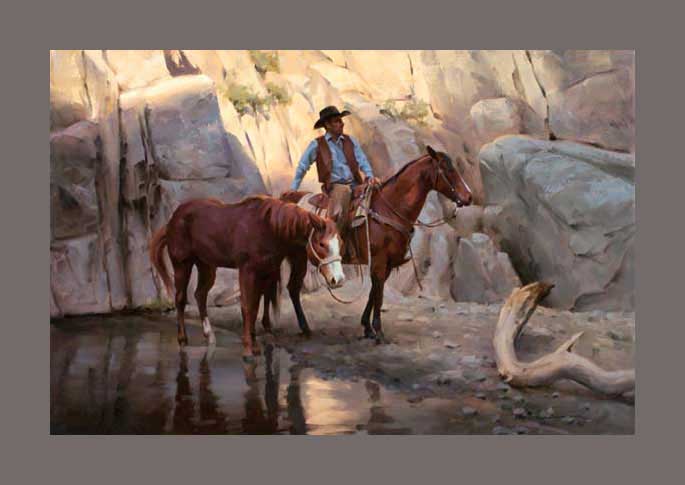Dear Artist,
I’ve been asked whether making paintings that use the works of dead artists but do not look like the originals, e.g. the position of the person has been changed, dress has been altered, face changed, etc., would still be considered plagiarism. This practice is called appropriation, one of the least offensive of the copying arts. However, you might ask yourself why you need to lean on dead masters. With all the great reference we can get ourselves, all the stuff yet to be made and all the pride that can be taken in a personal vision, there’s plenty left to play with. The urge to replicate may come from a natural reverence for the works of perceived “stars.” You might give some thought to being your own star.
If you’re appropriating, don’t wander into copying exactly some dude, dead or alive. Outright plagiarism and counterfeiting can get you into the slammer. Legally, your painting needs to be 10% different from that which you are imitating — hard to quantify but you should keep it in mind.
While some might consider it an homage, appropriation of style or subject can have the effect of making existing work trivial or banal. Over-appropriation and market-glutting cycles regularly attack wildlife, native American, faux-primitive and other art genres. The path leading to a unique vision is uphill and rocky, but it’s the stellar route to the dream of becoming “well-known.”
There are exceptions. I was on a jury once when a piece was chosen and then a juror pointed out that it was a knock-off of a demo in American Artist magazine. After a discussion the choice was upheld — the majority of jurors agreed that “we all use each other’s stuff anyway.” The excellent copy came in for a $25,000 prize and I was disgusted. I’m not sure of the best advice I’ve ever given, but this comes close: “Do something others will have the desire to plagiarize but will find difficult to do.”
Best regards,
Robert
PS: “Imitation is the sincerest of flattery.” (Charles Caleb Colton) “If I plagiarize, it’s because I like someone’s idea better than mine and I want credit for it.” (Anna Chin-Williams)
Esoterica: Louis Vuitton’s Murakami bag costs in the art-stratospheric range of $1500, generating about 300 million dollars in one year. The Chinese knock-offs, practically identical, cost about $35 and sell to a crowd that still needs to look good but never pays the big prices. Louis Vuitton spent over ten million dollars retaining lawyers and scouts to fight “brand devaluation by overexposure.” Two questions: “Is a bag art?” and “Who’s running the better racket — Louis or the Chinese?”
This letter was originally published as “Am I plagiarizing?” on November 9th, 2004.
[fbcomments url=”http://clicks.robertgenn.com/plagiarizing.php”]
Featured Workshop: Sharon Rusch Shaver

You may be interested to know that artists from every state in the USA, every province in Canada, and at least 115 countries worldwide have visited these pages since January 1, 2013.


Box Canyon oil painting, 20 x 30 inches by Tom Browning, City of Ontario, Oregon, USA |






